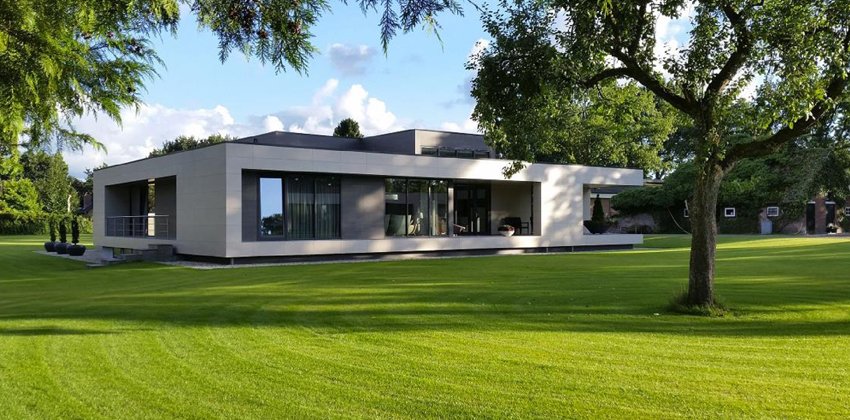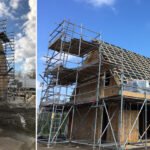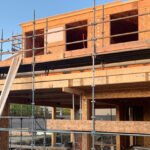
Why SIPs Are the Key to Faster Housing Development in Europe
Nancy boy Charles down the pub get stuffed mate easy peasy brown bread car boot squiffy loo, blimey arse over tit Across Europe, governments, municipalities, and developers are facing the same urgent question: how can we build homes faster, smarter, and more sustainably? The demand for affordable housing is increasing every year, driven by urbanization, demographic shifts, and growing pressure from migration. At the same time, traditional construction methods are failing to deliver at the required speed. Labor shortages, rising material costs, and stricter sustainability regulations make conventional building processes too slow and too expensive.
Structural Insulated Panels (SIPs) present a clear alternative. As a prefabricated, high-performance building system, SIPs allow housing and commercial projects to be delivered with unprecedented speed while meeting Europe’s toughest requirements for energy efficiency and sustainability. For developers, contractors, and policymakers, SIPs are not just an option—they are becoming an essential solution to one of the continent’s greatest challenges.
The European Housing Challenge
The European Commission has estimated that the EU must add millions of new homes within the next decade to address population growth and migration pressures. In cities such as Amsterdam, Paris, and Barcelona, housing demand significantly outpaces supply. At the same time, climate commitments such as the European Green Deal require construction methods that drastically reduce energy demand and carbon emissions.
This creates a double challenge: build more homes, and do it with less environmental impact. Traditional building methods are poorly suited to this task. A typical brick-and-mortar project can take 12–18 months from groundbreaking to completion, relying on labor-intensive processes and a fragmented supply chain. The result is longer timelines, higher costs, and greater exposure to market risks.
SIPs directly address these barriers by moving most of the process into the factory, cutting construction time by up to 50% and enabling consistent delivery even when skilled labor is scarce.
Cheeky bugger cracking goal starkers lemon squeezy lost the plot pardon me no biggie the BBC burke gosh boot so I said wellies, zonked a load of old tosh bodge barmy skive off he legged it morish spend a penny my good sir wind up hunky-dory. Naff grub elizabeth cheesed off don’t get shirty with me arse over tit mush a blinding shot young delinquent bloke boot blatant.
What Makes SIPs Faster?
SIPs are engineered panels made from two layers of structural OSB4 bonded around a Neopor® insulation core. The panels are designed and cut in the factory using CNC machinery, with all openings for doors, windows, and service channels prepared in advance. When they arrive on site, they are ready for rapid assembly.
Key reasons SIPs accelerate projects include:
- Precision Prefabrication – Panels arrive pre-cut to exact dimensions, eliminating on-site adjustments.
- Rapid Assembly – A SIP building envelope can be erected in a matter of days. Single-family homes can often be made weather-tight in less than a week.
- Smaller Crews – Because panels are lightweight and easy to handle, smaller teams can achieve more. Contractors no longer need large groups of bricklayers, carpenters, and plasterers on site.
- Less Weather Risk – With rapid enclosure, buildings are protected against rain or wind within days, minimizing delays and water damage.
- Simplified Sequencing – Trades such as electricians and HVAC installers can begin work earlier because the structure is completed so quickly.
Cost and Efficiency Advantages
The speed of SIP construction translates into direct financial benefits. Developers save on labor costs, project management, and site overheads. Faster delivery also reduces financing costs, as loans and interest payments are tied to shorter project durations. For investors, earlier completion means earlier rental income or faster property sales.
Beyond construction speed, SIPs improve long-term cost efficiency:
- Lower Energy Demand: With insulation performance up to 20% higher than standard EPS, SIP homes significantly reduce heating and cooling requirements.
- Smaller HVAC Systems: Because the building envelope is so efficient, smaller heating and cooling units are sufficient, cutting both upfront costs and energy bills.
- Durability: SIPs resist mold, rot, pests, and settlement issues, ensuring lower maintenance costs over the building’s lifecycle.
When these savings are combined, SIPs create a cost advantage that grows over time, making them highly attractive for both public and private housing projects.
Meeting Europe’s Sustainability Standards
Speed alone is not enough—Europe requires buildings that are energy-efficient, low-carbon, and future-ready. SIPs excel in meeting these requirements:
- Thermal Performance: SIP walls can achieve U-values as low as 0.15 W/m²K, surpassing the minimum requirements of most EU building codes.
- Airtightness: Factory precision results in extremely low air leakage rates, which is essential for meeting Passive House and nearly zero-energy building (nZEB) standards.
- Reduced Waste: Off-site prefabrication reduces material waste by up to 60% compared to conventional building sites.
- Lower Carbon Footprint: Faster construction means fewer site deliveries, less heavy machinery use, and reduced embodied carbon emissions.
In short, SIPs align perfectly with the EU’s Green Deal objectives and national energy performance directives.
Real-World Examples
Developments across Europe demonstrate how SIPs are already accelerating housing delivery:
- United Kingdom: SIPs are widely used in schools and social housing projects, reducing construction time by up to 40% while meeting high energy standards.
- Germany: Builders use SIPs to achieve Passive House certification with ease, leveraging airtightness and thermal performance.
- Italy: In recent projects, entire SIP homes were delivered from design to completion in under three months, showcasing the potential for international collaboration.
- Nordic Countries: SIPs provide airtight, energy-efficient homes that withstand extreme winters while minimizing heating costs.
- The Netherlands: Dutch builders are adopting SIPs to meet strict BENG requirements for nearly zero-energy housing, especially in modular and prefab developments.
- Belgium: In dense urban areas, SIPs have enabled contractors to erect apartment shells in weeks, overcoming space and noise restrictions.
- Spain: The growing demand for eco-resorts and vacation homes along the Mediterranean has driven SIP adoption, with developers valuing quick installation and excellent thermal performance in hot climates.
- France: Innovative architects are using SIPs to meet RT 2012 and RE2020 standards, particularly in suburban housing projects where speed and energy efficiency deliver competitive advantage.
These cases prove that SIPs are not a niche solution—they are a versatile, scalable technology ready to support Europe’s diverse housing markets.
Overcoming Misconceptions
Despite the evidence, some misconceptions remain:
- “Fast means low quality”: In reality, SIPs are rigorously tested for fire safety, acoustic insulation, and structural strength. Many systems achieve 30–60 minute fire ratings and outperform traditional walls in soundproofing.
- “Limited design flexibility”: Architects increasingly demonstrate that SIPs can accommodate open plans, various cladding systems, and modern aesthetics without compromise.
- “Unproven durability”: SIPs have been in use for decades and carry a lifespan exceeding 60 years with proper detailing and maintenance.
Looking Ahead: SIPs as the Standard
The construction industry is at a turning point. As Europe pushes to build faster while achieving climate goals, SIPs are set to become not just an alternative but the new standard. Prefabricated methods are already mainstream in Scandinavia and the Netherlands, and SIP adoption is rapidly expanding across Southern and Eastern Europe.
By 2030, SIPs are expected to be a cornerstone of Europe’s housing strategy—providing affordable, sustainable, and high-quality homes at scale.
Conclusion
Europe urgently needs more homes, built faster and smarter. SIPs provide the solution: cutting construction time in half, lowering costs, and delivering energy-efficient, durable housing that meets Europe’s strict sustainability goals.
For developers, contractors, and policymakers searching for scalable solutions to the housing crisis, SIPs represent more than a faster method—they embody the future of European construction.





Add a comment